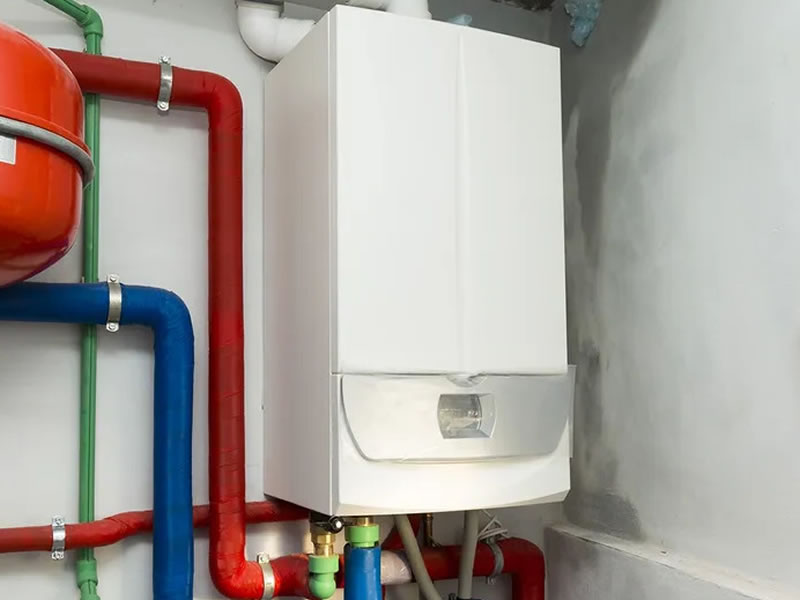Condensing boilers offer a significant advantage in energy efficiency by capturing heat that would otherwise be lost through the flue. With efficiency levels exceeding 90%, these boilers are a smart choice for heating water while minimizing energy wastage. However, achieving peak efficiency depends on setting the right temperature for your boiler. In this blog post, we’ll explore the mechanics of condensing boilers, the importance of condensing mode, and the ideal temperatures for both central heating and hot water.
Understanding How Condensing Boilers Work:
Traditional boilers lose a considerable amount of heat through the flue, but condensing boilers address this issue with a secondary heat exchanger. This component recycles heat from waste gases in the flue, condensing water vapor and recovering energy that would otherwise be wasted. The return pipe, responsible for bringing water back from radiators, benefits from this process by requiring less energy to heat, as it has been pre-warmed.
Is Your Boiler in Condensing Mode?
To ensure maximum efficiency, a condensing boiler’s secondary heat exchanger should operate at or below the dew point temperature of the fuel used. For natural gas boilers, the dew point is approximately 55°C. Adjusting the central heating flow temperature to around 70°C should activate condensing mode in most cases. Modern boilers often have indicators to help users identify when condensing mode is active.
Balancing Efficiency and Cost Savings:
Running a boiler in condensing mode improves efficiency, but the lowest central heating temperature that maintains comfort levels offers the best cost savings. It might seem counterintuitive, but setting your boiler to the maximum temperature can result in lower efficiency and higher gas consumption. Striking a balance around 50-55°C is a cost-effective approach, considering the efficiency of heat pumps.
Debunking Heating Myths:
Contrary to the belief that leaving heating on constantly is more cost-effective, the key lies in efficient heating when needed and turning it off when unnecessary. This approach maximizes savings and promotes energy efficiency.
Hot Water Considerations:
For hot water systems, the recommended temperature depends on the system type. Combi-boilers, operating without a return flow for condensing, should be set at 60°C for safety. Hot water tanks, on the other hand, require a minimum of 60°C to prevent legionella bacteria growth. Adjustments can be made based on personal preferences and safety considerations.
Although the recommended safety setting for combi boilers is 60°C, it’s entirely feasible to opt for a cooler temperature. In our case, we have chosen to set our hot water at 45°C, providing sufficient warmth for tasks like washing dishes and hands without requiring the addition of cold water.
Conclusion:
Understanding the intricacies of condensing boilers and finding the optimal temperature settings is crucial for achieving both efficiency and cost savings. By embracing the principles outlined in this blog post, you can make informed decisions to maximize the performance of your condensing boiler.


